India! There’s no one adjective to capture the essence of it! Superlatives would fall short, in describing the oldest continuously existing civilization in the world.
The ancient Vedic precepts that sired a unique way of life, is dependent on a vast repository of accrued insights, contemplated and empirical, in universal conduct, deference to diversity and laws of nature, tolerance and inclusion.
It’s a vast ocean of heaving wisdom that overwhelms anything that comes in contact with it, especially, faiths founded on the concept of exclusion. The Vedic way of life is an egalitarian force, which, in the ensuing millennia had smoothly segued into the world’s largest democracy. Where now, interfaith marriages unfold in a surreal amalgam of culture and color, dissolving the rigid dogma. India is a cornucopia for not only the senses, but sanity as well – the symbolic colors, as its catalytic force.
“Clouds come floating into my life, no longer to carry rain or usher storm, but to add colour to my sunset sky.”
Rabindranath Tagore (1861-1941), Stray Birds, Nobel Prize for Literature, 1913
Recently, I had asked my friend, a bright young man, from Mangalore, India, if he wanted that B&W picture of him and his family I had shot. He responded, “I don’t want it in B&W!”. This percolated in me for a while, eventually triggering this query. Why do Indians prefer color to B&W photographs? I was convinced of a psychological component to this condition. Color is an overwhelming, yet unobtrusive conditioning agent. Simple example: bright tropical colors engender happiness, despite destitution. On the other hand, constantly cloudy-gray places like Seattle induce depression and suicides, despite the affluence. Color does render life! Therefore, his request is the manifest symptom (a natural symptom, a system) of that conditioning – whereas, in art, as in B&W, it’s volitional, not a conditioning system, that abstracts reality.
The Indian panorama is saturated with greens, reds, Saffrons, blues, and whites, almost never black and its variants: grays. In fact, black is an incongruent concept for the simple reason that it’s hot there, in the shade as well – and, even in death, white is used instead of black. A widow mourns in white. Colors like Saffron, the most sacred of all colors, symbolize fire, which represents the destruction of evil and impurity. Red is dense with sensuality, virginity, fecundity – female divinities and young women wear red. Green encapsulates life, eternity, and happiness. Yellow for meditation, competence and wisdom, and blue for the depth of character, sacrifice – as in mythological heroes swallowing evil and poisons of the world to protect the innocents. And, white is austerity, abstinence and stability. In a place that is always searing – white happens to be the cool ‘old’ black!
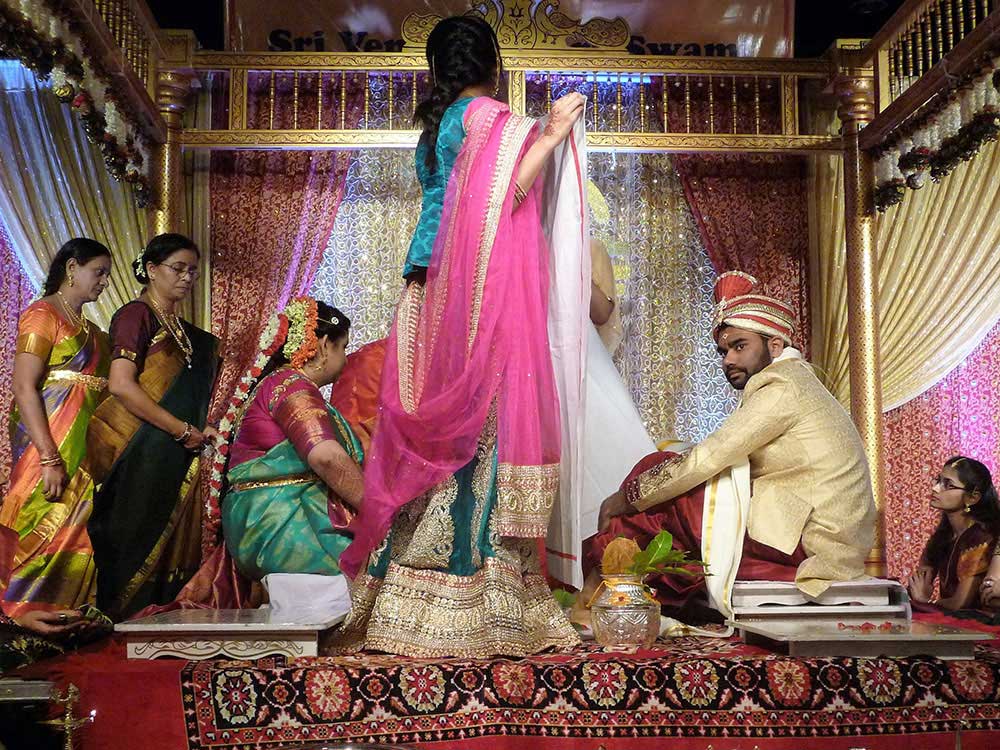
Michael Wood, the historian-documentarian for BBC, when visiting the Madura-Meenakshi temple complex, in the ancient capital of the Chola empire, deep in south India, had remarked that seeing the ancient temple in action after its founding over a thousand years ago, with so much color, incense and chanting, induced a vision: he felt he was gazing at the resplendent Parthenon, the temple of Goddess, Athena, 2400 years ago – during the age of Pericles. The medieval temples of India, saturated in primary colors, are thronged by millions every day. They are the only places still intact, in their ceremonial glory, that evoke the ancient Greek and Roman temples. For Indians, color is a bridge that connects the natural law to their universal values, and as a bigger bridge it facilitates the past to be wholly present now, and in the future. India’s vast southern material culture is not only tantalizing, but intriguing to a westerner. Ancient Romans traded for Indian incenses, essences, gems and silks – a fashion with Roman ladies of wealth and power. The richness of southern traditions in color is an infinitely rewarding spectacle than that of any region in India. White Jasmine flowers (known as Malli-puvvu) as woven strands substitute for branded perfumes, in their braided hair. Twenty-four carat gold threads are woven into organically grown silks, dyed in primary colors, from Banaras and Kanchipuram that fetch upwards of $10,000 a sari – gold is everywhere, ornaments, clothes, even food. It’s a sacred metal!
When it comes to color, there’s a vast chasm between the east and the west. A marriage in the west, usually a summer affair, is a sea of pastels: lavender, powder blues, creams and whites. The bride goes on a power diet to get thin. In southern India, bright colors proliferate in their dress protocol – and the brides are coveted by the grooms when they are “Pushti,” meaning healthy breeding weight. Personally, I prefer the latter to the prior. Who wants an anemic bride that is wanting of that virginal glow, and nothing substantial to caress and hold? Ceremonies warrant the change of colors, which, are initiated and conducted based on “Muhurtam” – an ordained time, as prescribed by the priests and their astrological calendars, for there are many sub-ceremonies, within the master ceremony of marriage. For the photographer, it’s the equivalent of a hot-air balloon festival or the Rio Carnival!
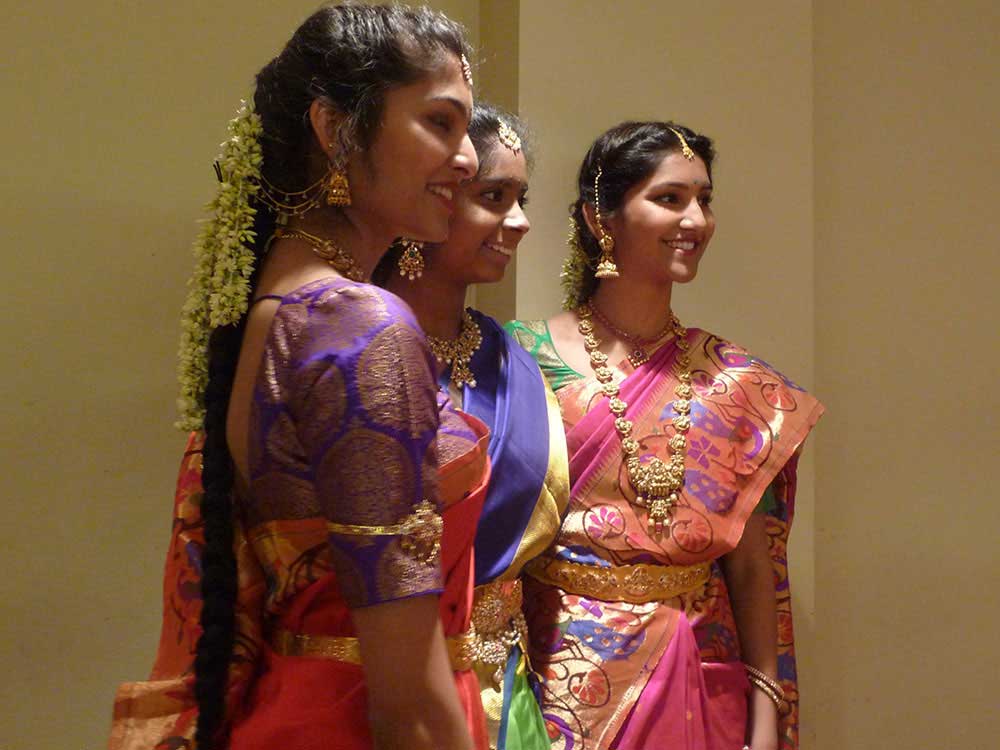
Indians, being the people of intense earthly colors, reject the B&W concept of continuous gray tones, especially, in the deep south, the Eden of primary colors in nature. To them, color is good life, B&W: lifelessness, a dubious state. Their philosophy unfolds in action, not in contemplation of the abstract. A ripe yellow mango has to look ripe yellow – not some arbitrary expression or representation, open to interpretation and debate. Abstraction, especially, aesthetic abstraction, warrants an effort to process it, therefore, a non-starter, as there are whales to fry – with the possible exception of, perhaps, Bengal, where it seems all aesthetes and synesthetes of India have congregated. How can we forget the piercing B&W films of Satyajit Ray or Mrinal Sen – and their great poet, Tagore?
Contemporary Indian films are examples of color saturation, it can be overwhelming for a B&W purist like me. Color films represent a real escape, from the harsh realities there – so demanding and frantic that the focus is always on the art of survival, never on surreal art. Color means being close to reality, since B&W requires a departure from their comfort zone to a speculative zone where meaninglessness and risks accrue – the unknown is unwelcome! But then, was it like this in ancient India? What had
been revealed from standing monuments is that the ancient Indian populace was an aesthetically charged force – they had a litho- vernacular, their temple walls told stories through action oriented figures in granite in their vast complexes – often, these figures were painted in symbolic colors. And, the application of color had a rationale, a logic, nothing was arbitrary.
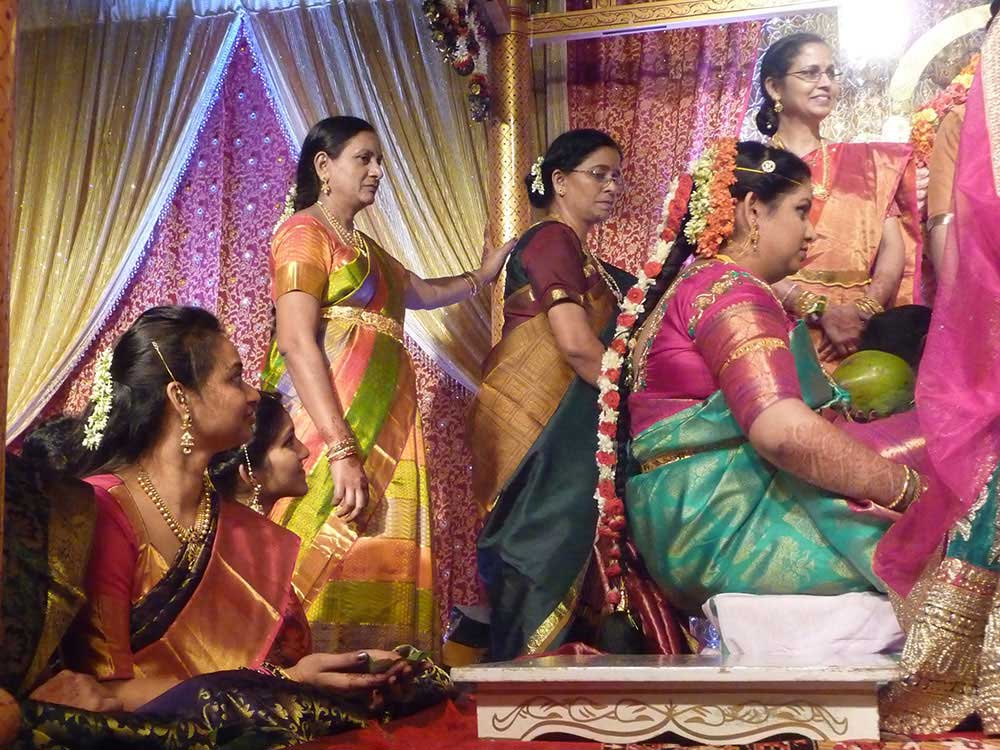
If their choice of color is so absolute, so definite – what is the reason behind it? It cannot be just their visual conditioning. Carl Jung had postulated on such issues, and had proposed that color, and everything else, intriguingly, is not our choice. It’s a part of our psychological script that had been passed down from our grandparents. It’s also genetic memory – genes encoded with choices made by our ancestors, are carried down through generations, to us. During WWII, certain Dutch towns suffered through horrifying starvation, that memory ended up with their descendants, who are mostly obese – the result of a protein valve being switched off in their DNA, due to the starvation – as a result, the descendants couldn’t stop eating, they ate and ate. I love the Star- Wars theme, and at three months old, my son was ecstatic whenever he listened to it. To acquire a new taste, it requires us to alter, or recondition our psych-script, quite a challenging proposition. It has to be conscious and vigorous effort. In my early years here (U.S.), I painted in primary colors – in less than twenty years, I became a monochromatic fiend, now it’s in my epigenome, part of the DNA. For more: http://content.time.com/time/subscriber/article/0,33009,1952313-2,00.html. However, it was easy for me, I am an aesthetic fiend!
This brings me to another science, specifically, neuroscience. Our notions of how we registered colors, whether in art or reality, was actually put to study by some neuroscientists with startling results. Michael Bannert and Andreas Bartels of the Bernstein Center and Werner Reichardt Centre for integrative neuroscience, had published a research study of participants (group A) who, astonishingly, when shown B&W pictures of various fruits, their brain activity elicited patterns of specifically encoded colors. In other words, their brain activity accurately processed the color of the fruits, seen as B&W.
The brain activity of another group: B, was also identical to that of the group A, when they viewed the real fruit. This proved that there was no difference in how the brain registered color or B&W of the same objects. Subconscious memory? The process time for the brain was not enough to warrant notice – thereby eliminating the arbitrariness of the real vs representation. However, I would like to see what would the brain activity be, when subjected to the abstract, the ambiguous.
As an ardent aesthete. Color, to me is great – but, for me, the escape into the illusion of color is less attractive than being lost in speculative aesthetic of abstraction, asymmetry and ambiguity. The gray tonal aspects of B&W are like finely spread out meadows moving in the breeze, where gradations of wild colors evoke and elicit very subtle nuances in characterizing our condition. An imperceptible shift in our condition, physical or metaphysical, is still movement, dynamic. The intrinsic significance lies in the philosophical maxim that we cannot really capture what’s moving, which is life, by calling it “still life” – therefore, we can, if we choose to, find fulfillment, not in the illusion of clarity, but, in the manifest reality of ambiguity and its inherent beauty, in our fundamental condition: movement.
And speaking about movement, traditions, ceremonies, and rituals are absolutely kinetic. We cannot find reasonable answers, nor the roots to some of these esoteric practices from the dim past – except, that these celebratory activities are the mechanisms of memory, a futile effort to halt our transience, to unify and continue – in other words, seeking permanence, against the brutal temporariness of existence. Traditions are illusions of permanence. The essence of all such celebratory traditions was austerity, sacred-symbolic colors, profound restraint, in deference to the wisdom that professed against excesses. But, today, such occasions are marred by the gross and orgiastic display of wealth and decadence. Simple and pure traditions have been replaced by profligate perversions – and photography to match it.
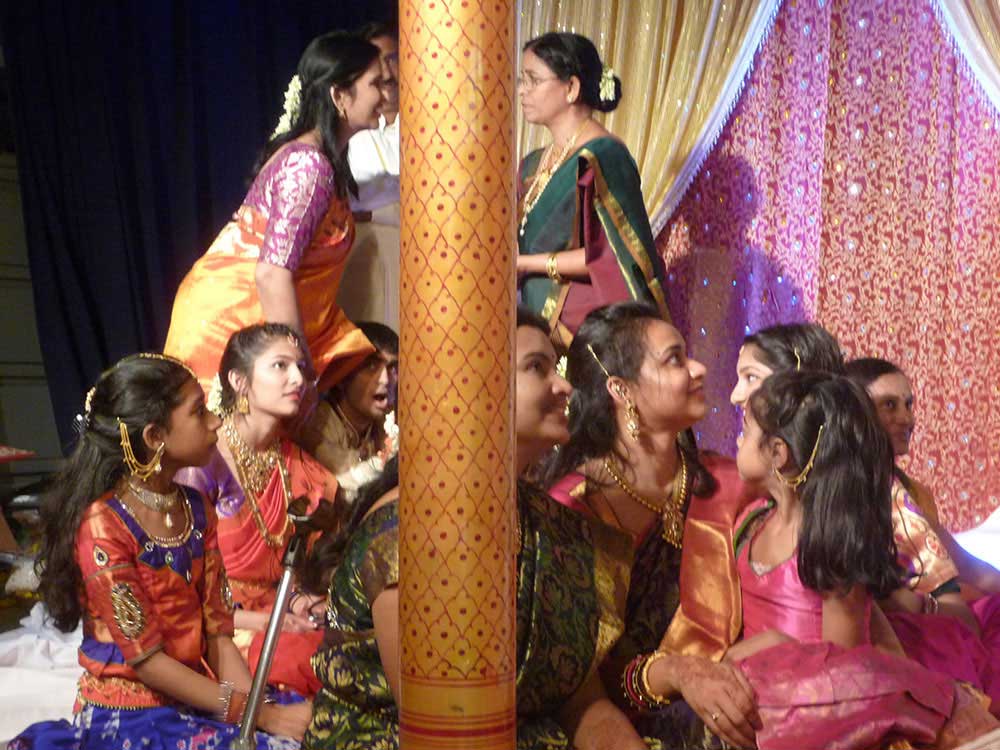
Event (Wedding) photography is merely record keeping in the form of contrived cliches. It misses the aesthetic component inherent and intrinsic to such special conditions. Unfortunately, it caters to voyeurism and vanity, without ever addressing the aesthetic in the vicissitudes of traditions. Photography, is such situations, could be a study of conditioning psychology. It is, another way of writing, dependent on our perception and experiences – exactly the way Thomas Mann and John Steinbeck did. If you want the present understood, then understand and depict the past. If we have set out to capture the human condition, wouldn’t it behoove us to probe and understand the subject’s, conditioning? Conditioning leads to condition – when we start with the prior, we narrate better. Dorothea Lange was completely aware of the dust bowl dynamics, before she set out to record the pathos of the families, hence, her contagious images. Finally, it’s not my friend’s handicap for choosing color over B&W, rather, it was mine, till I studied and became aware of… why he chose color.
This photo-essay brings forth some very rare photographs of the ancient ceremonies that still unfold at various venues, right here in America. I photographed, under difficult circumstances: no pausing of the ceremonies for posing, it was extempore all the way through, subjected to constant movement – therefore, every photograph is insufficiently or unevenly lit and soft-edged, in fuzzy focus. Nevertheless, I am very grateful to our family friends for allowing me to close in on their ceremonies, and for staging an incredibly accurate and traditional Vedic marriage ceremony for their daughter, at an Indian temple, without ostentation. It was a magnificent festival of color in the consecration of their union. I also am thankful to Mr. Manjunath Kunigal of the Vasavi- Devotees-Group and Mr. Venkatesh Bhogireddy for allowing me to intrude during their ceremonies to record the proceedings. [Photographs & Text, Copyright © Raju Peddada, May 27, 2018 – All Rights Reserved.]
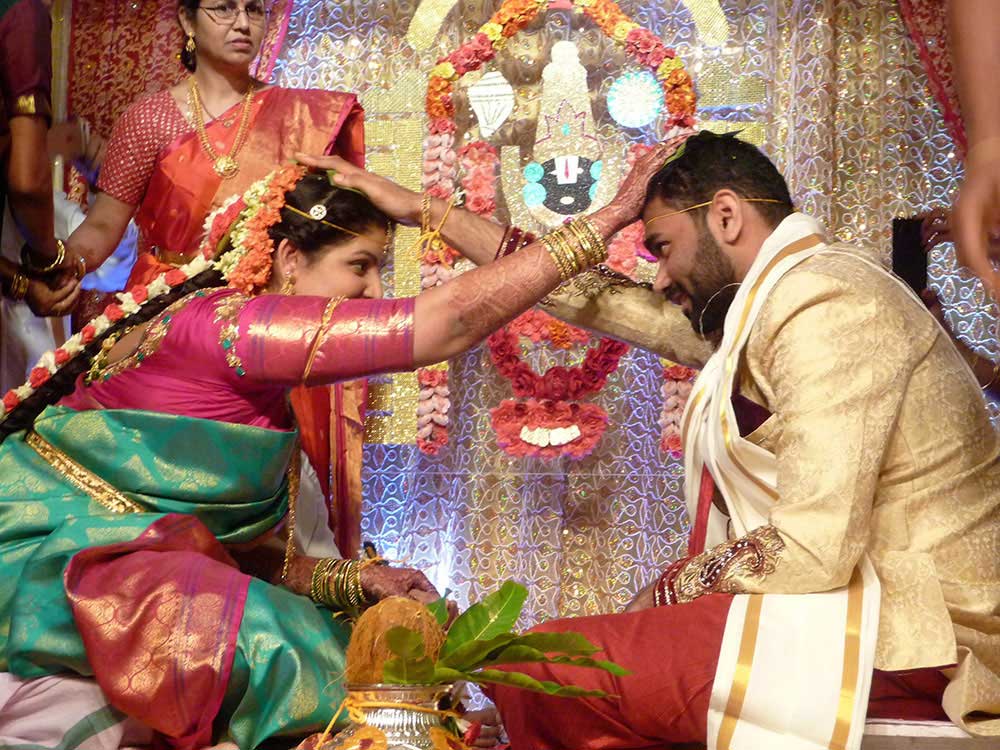
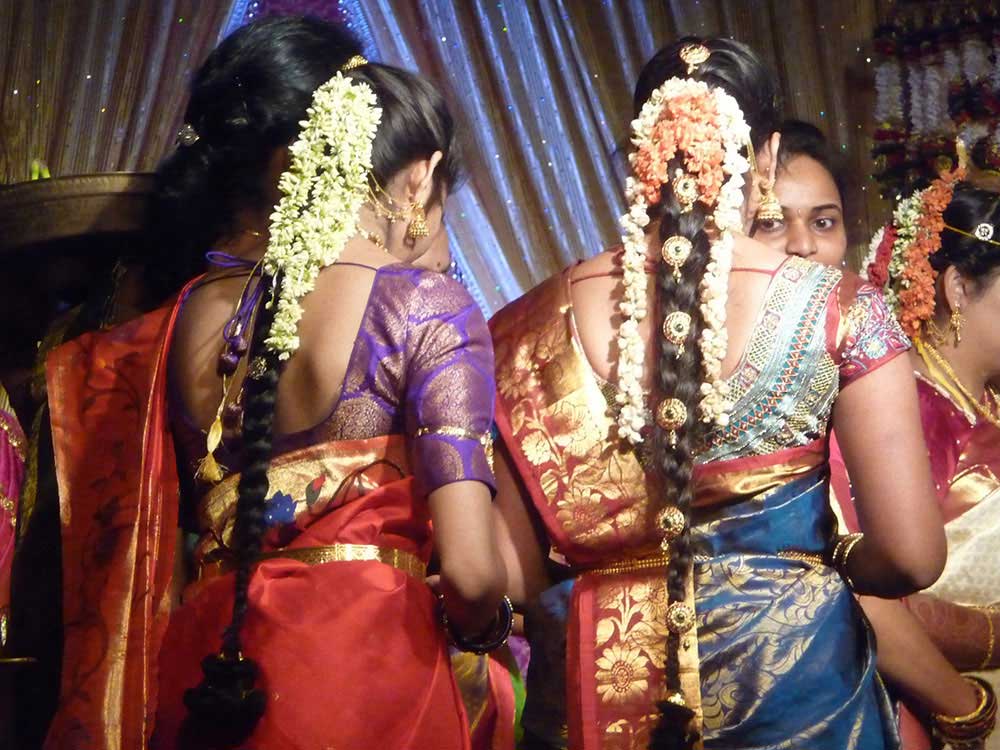
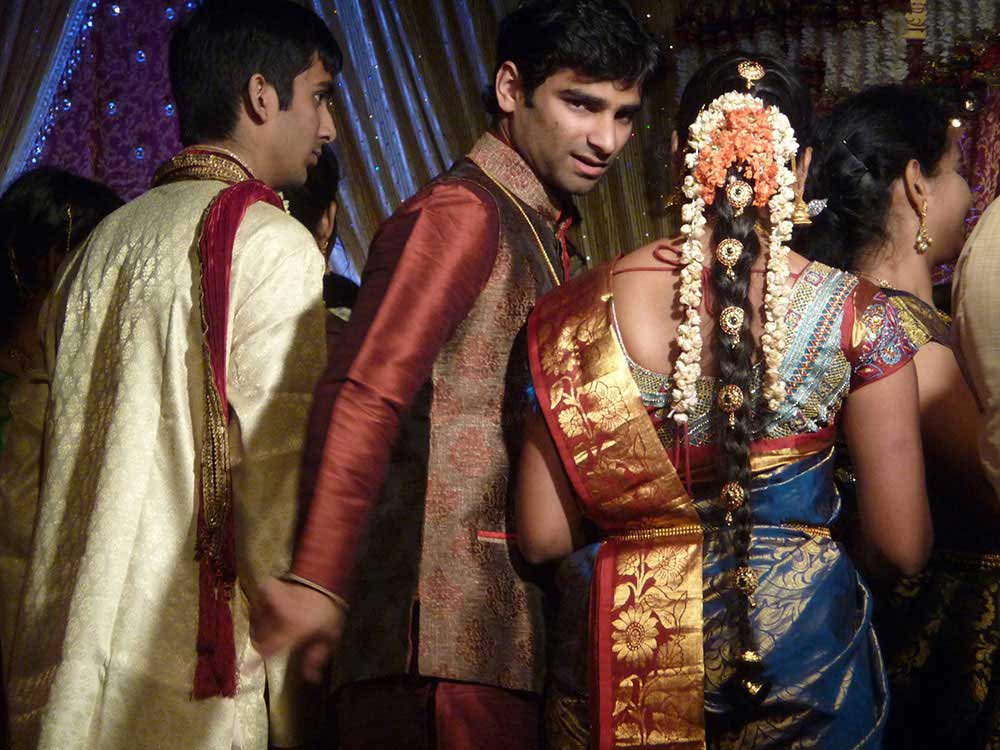
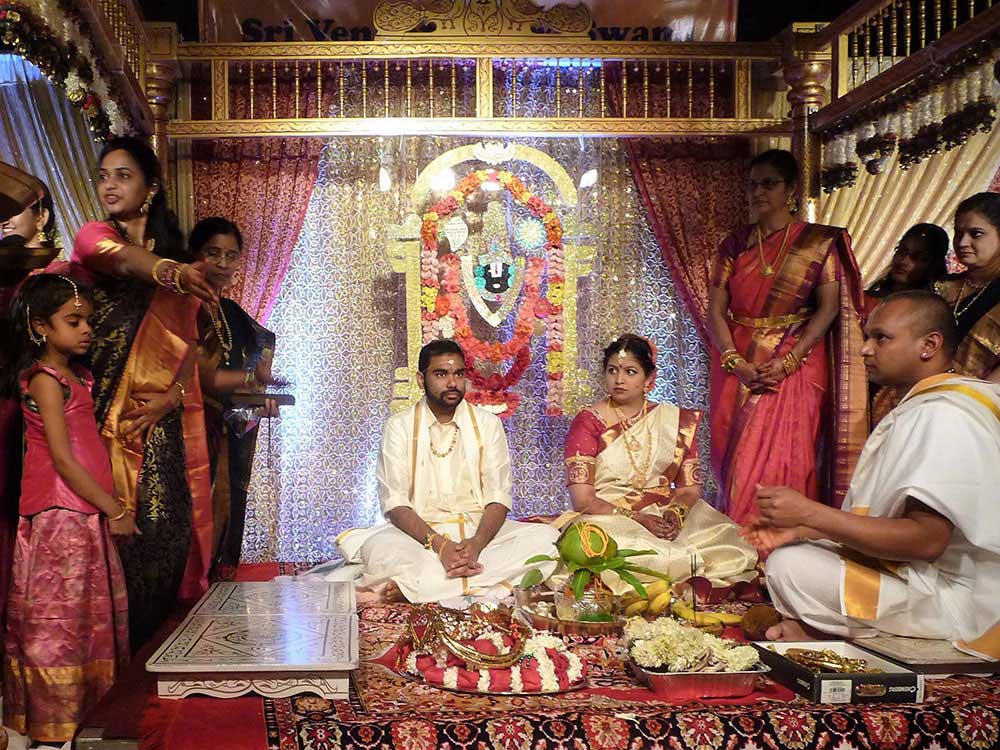
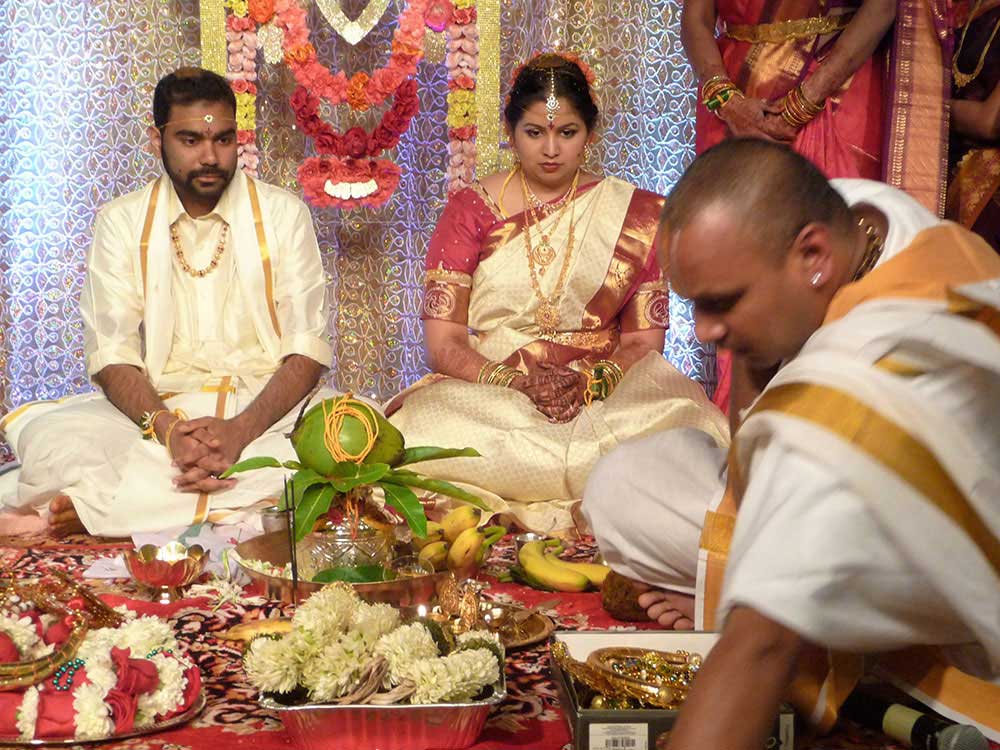
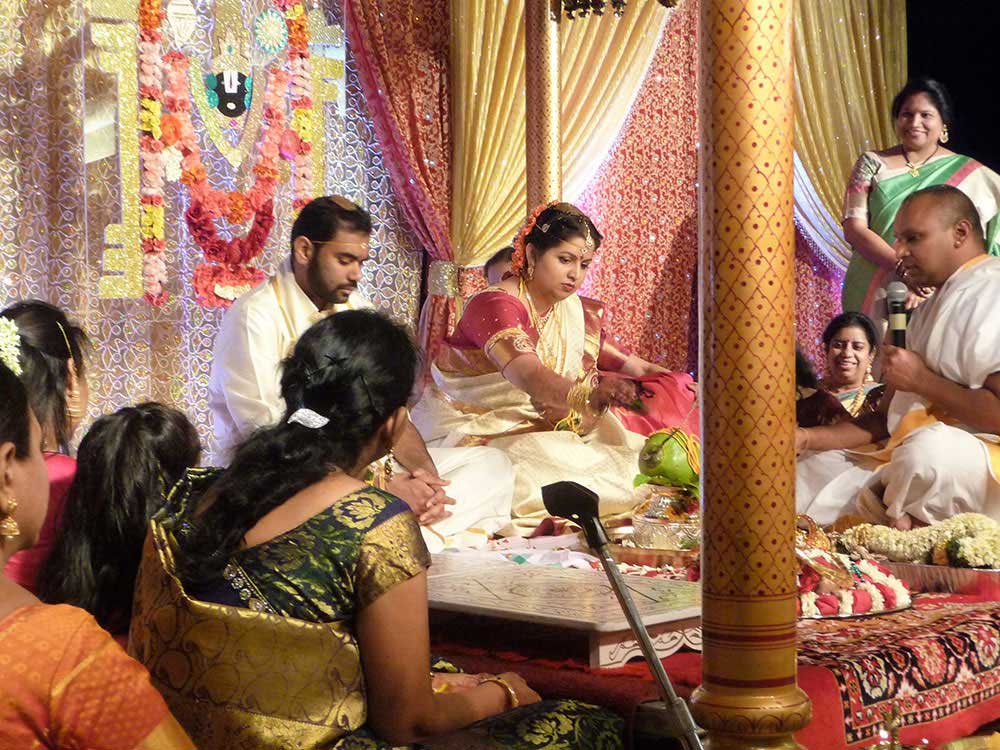
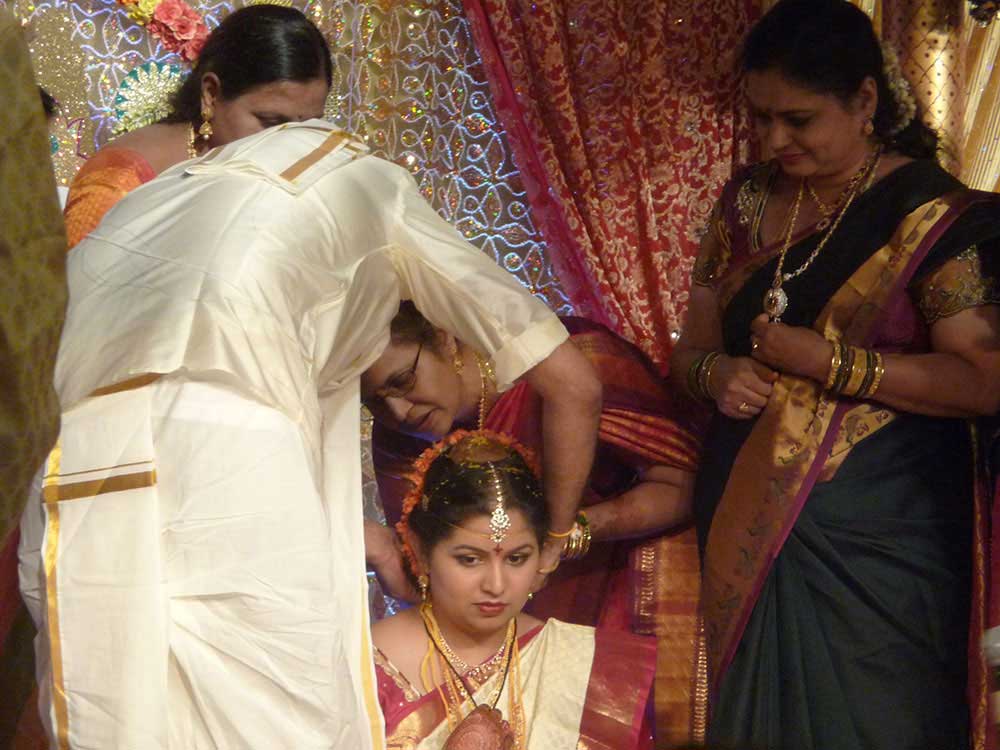
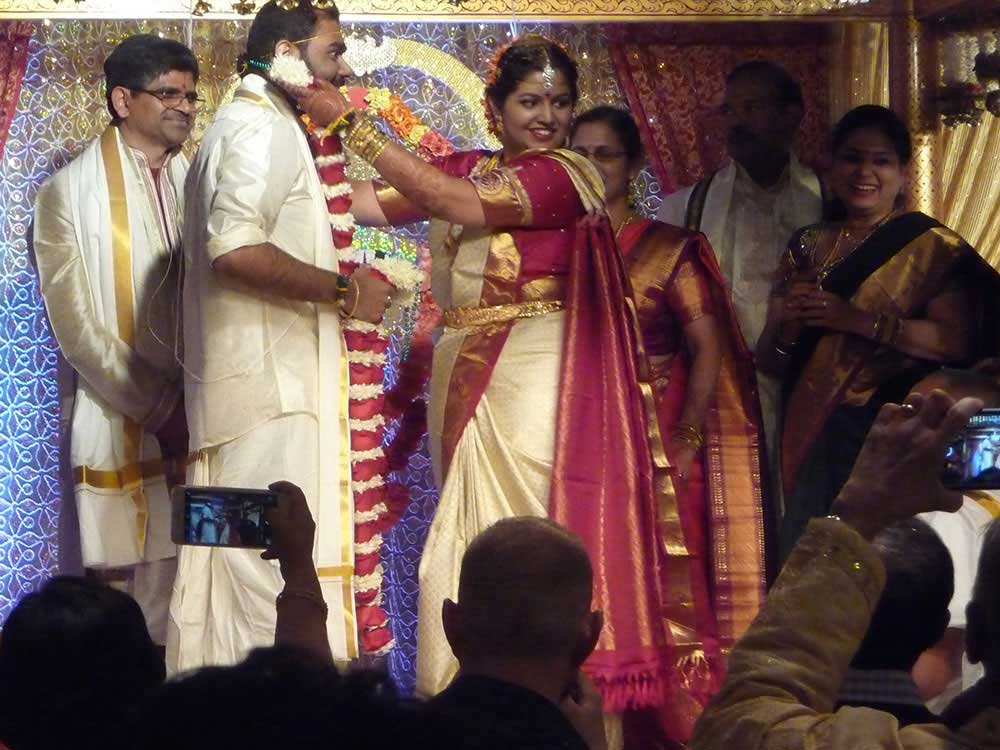
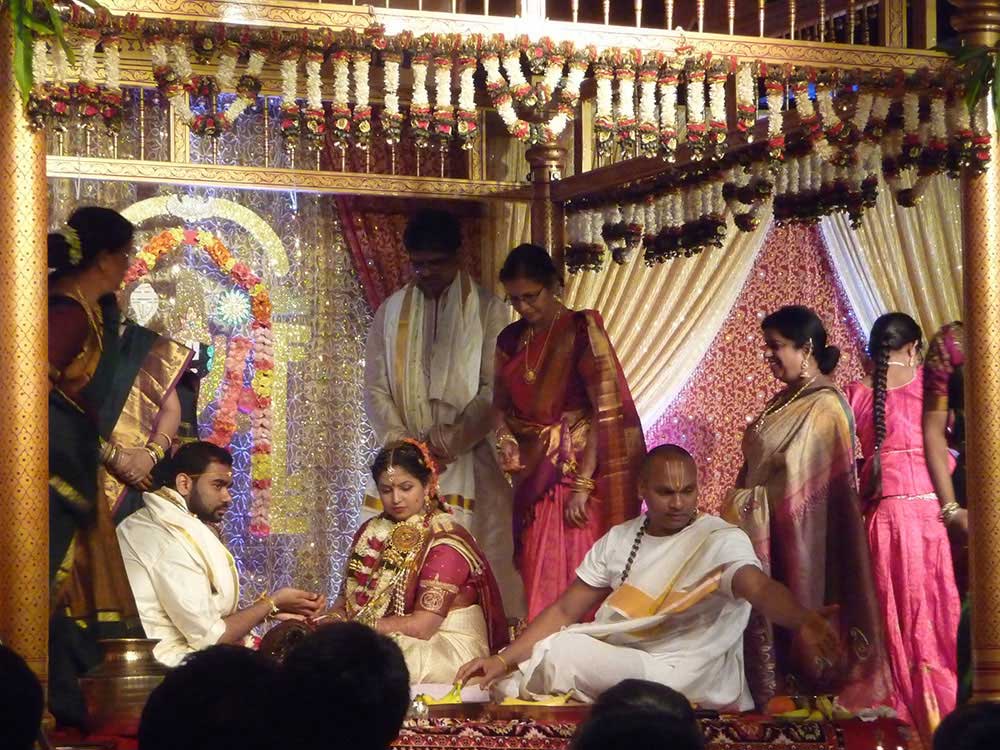
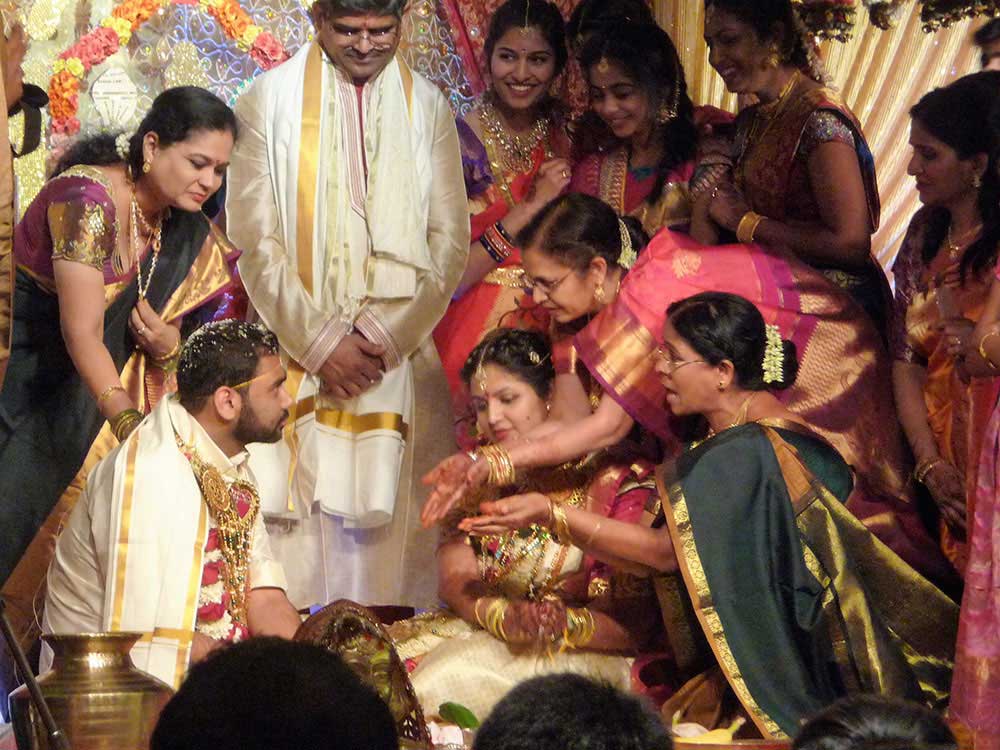
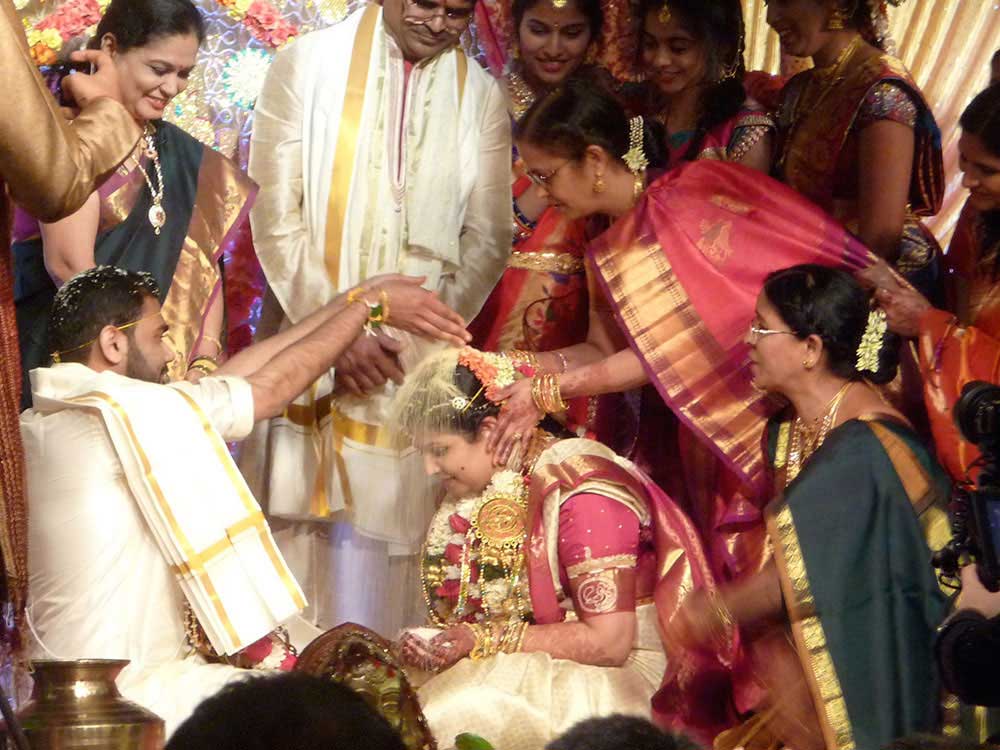
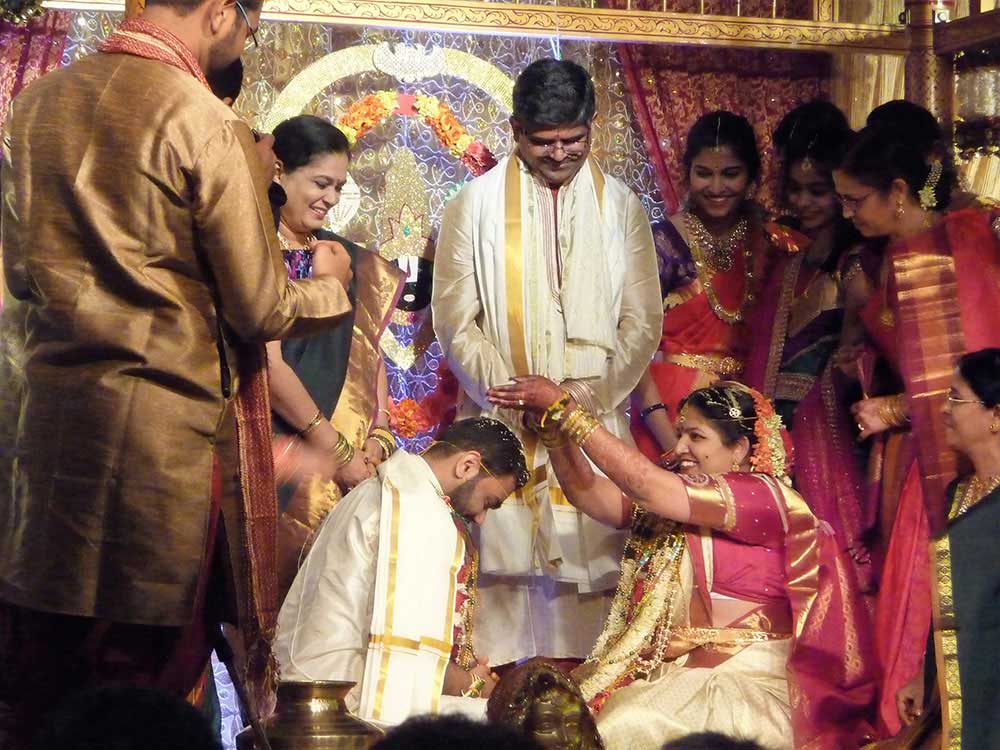
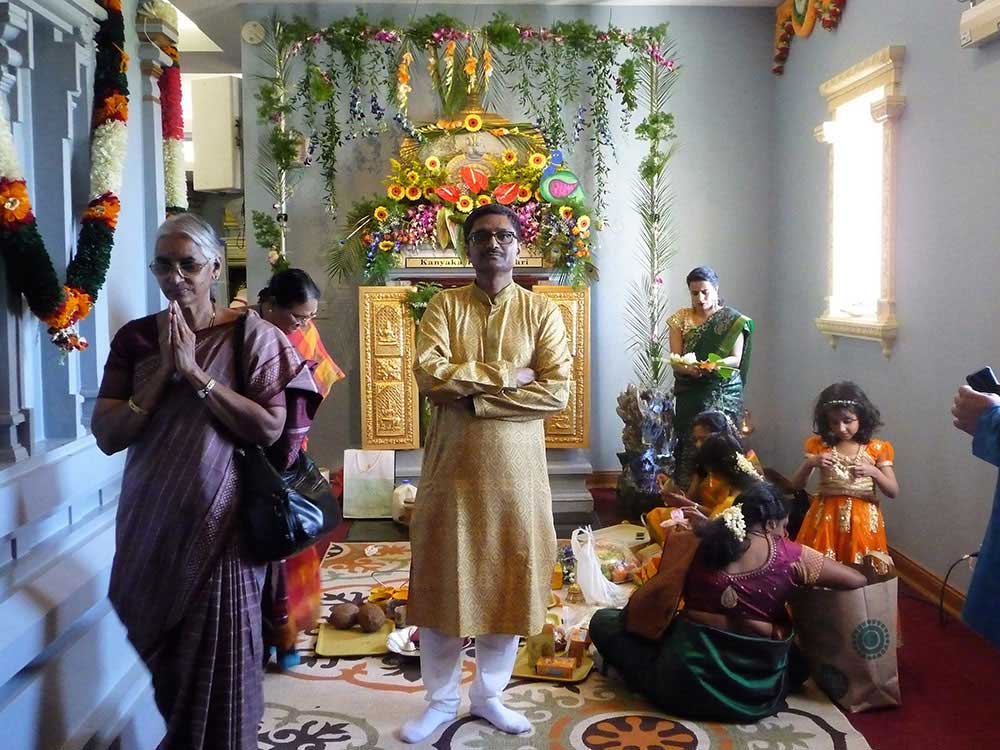
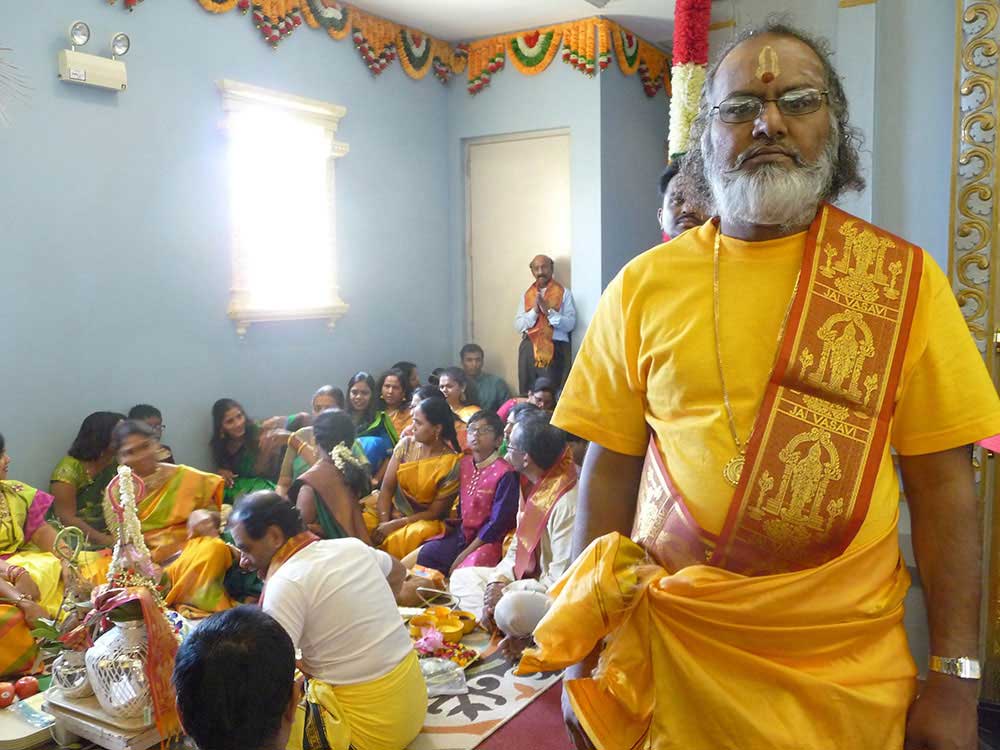
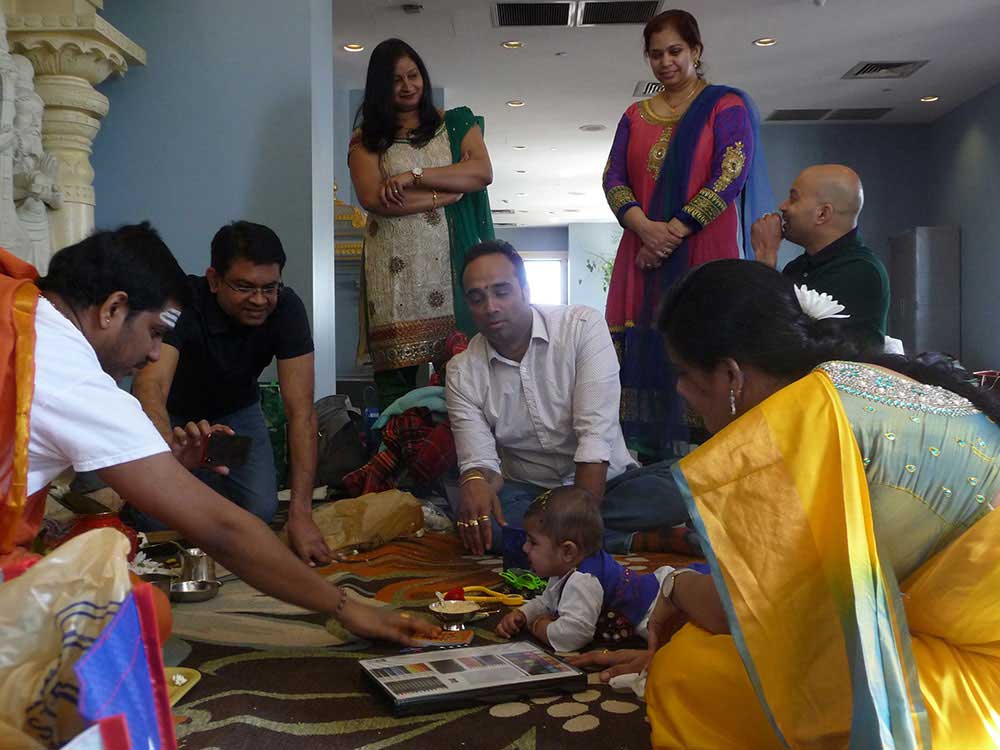
Raju Peddada
Raju Peddada was born in India, and migrated to the United States in 1983. He is the founder and CEO for PEDDADA. COM since 1999, and also a producer/writer for Satyalu+Kristi Media, USA. He is a design provocateur, an originalist in design contemplation, who draws inspiration not from other designers, but from nature, history and literature. He has 22 Design Patents, and was also responsible for several critically acclaimed and sold out products launches to the high end luxury furnishings market. He has been editorially featured in scores of international culture-design magazines as the “Taste-maker,” in Interior Design, Clear, Dwell, Spaces, Domus, Abitare, Interni, Frame, Monitor, Objekt, Chicago, the Chicago Tribune, and Cable news. In addition he also is a freelance journalist, with over a 100 essays-articles- reviews in literary magazines like Swans.com, Bookforum, Spaces, and the NY Times. He is a photographer, who in the summer of 2017, released his exploratory thesis on “The Aesthetics of Ambiguity,” which essentially shifts the aesthetic paradigm, from the stillness aesthetic to that of ambiguity, in sensing the beauty of our movement and condition in the urban setting. Three photographic exhibits are in the offing. He is the author of four small books.






